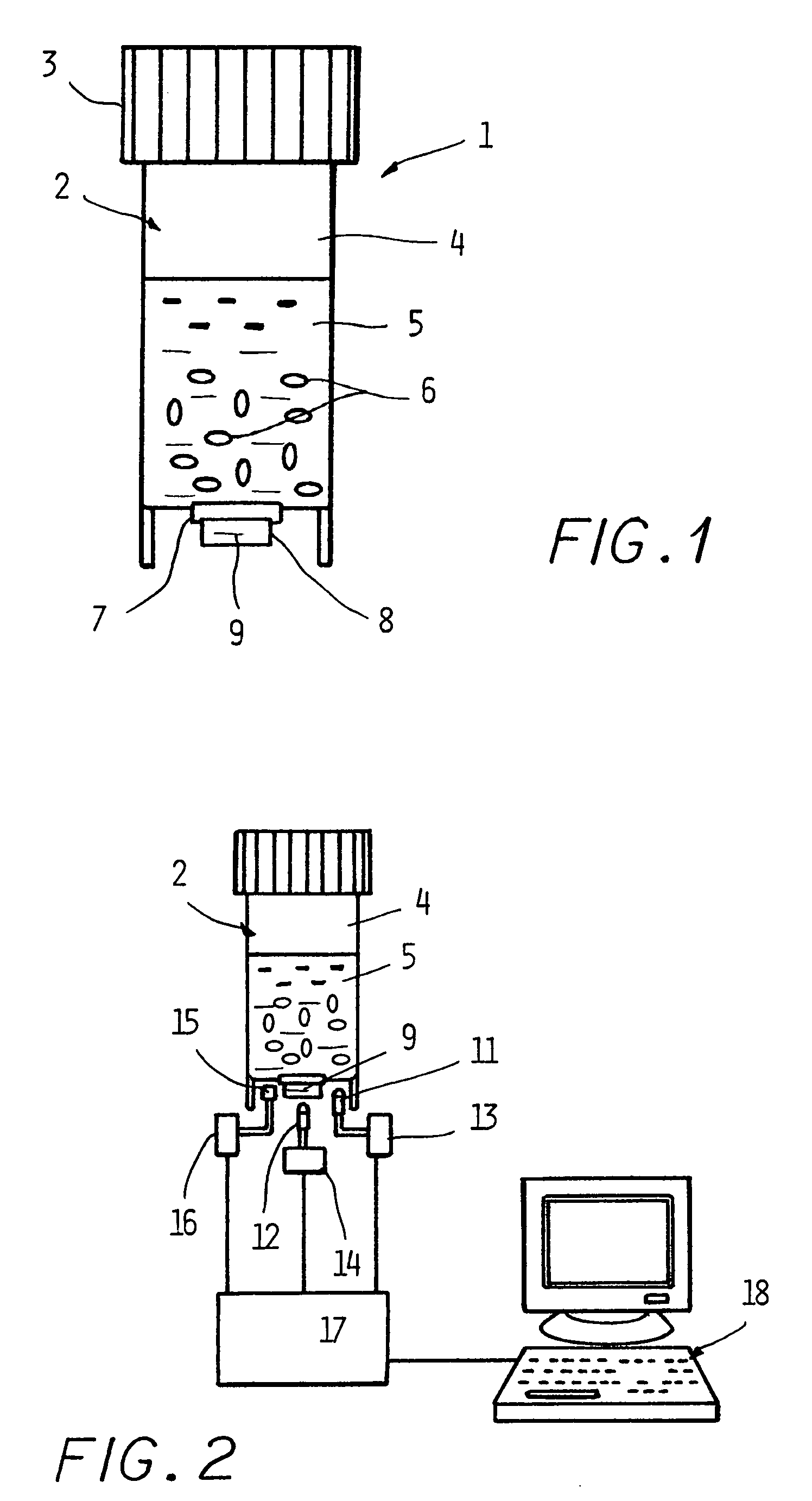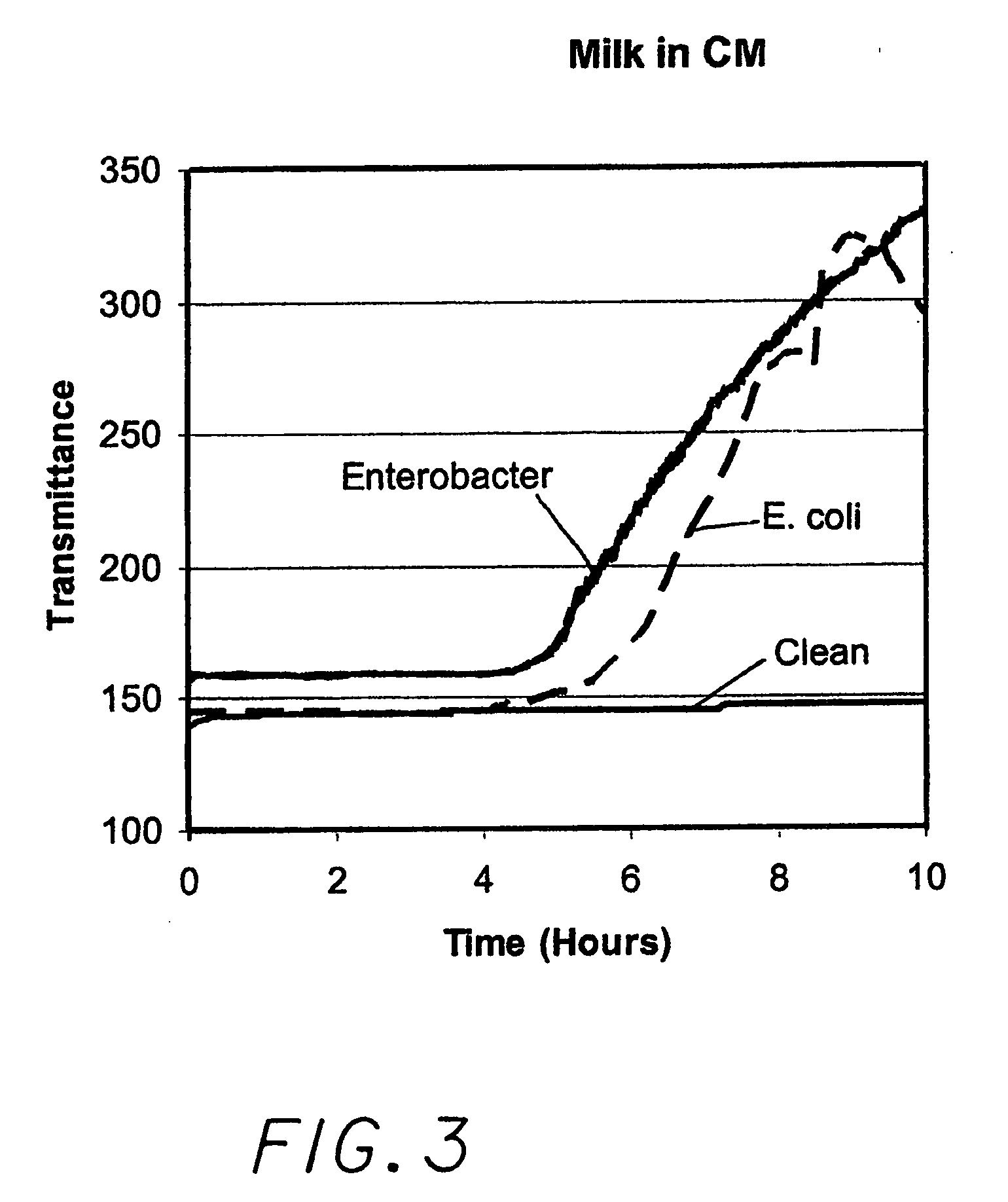Optical Method and Device for the Detection and Enumeration of Microorganisms
a microorganism and optical method technology, applied in the direction of microorganisms, bioreactors/fermenters, biomass after-treatment, etc., can solve the problems of insufficient enumeration tests, slow sensor speed, limited device determination,
- Summary
- Abstract
- Description
- Claims
- Application Information
AI Technical Summary
Problems solved by technology
Method used
Image
Examples
example 1
[0018]Three containers were prepared with a barrier layer made of hydrophilic Porex disks (material #4897) and pre-filled with 9 ml of mixture of coliform media (BioMérieux CM) that also contains an adequate amount of Bromocresol Purple. Bromocresol Purple changes its color from purple to yellow due to fermentation of lactose resulting in the reduction of pH. Three samples of 1 ml of pasteurized milk were prepared, one inoculated with E. coli, another with Enterobacter aerogenes, and the third remained un-inoculated. Each 1 ml sample was pipetted into one of the three containers and placed into the fixture assembly inside an incubator set at 35° C. Data corresponding to the transmittance value picked up by the photodiode 15, due to activation of the light source 11, was collected and stored every 10 minutes. The collected data for each of the three containers is shown in FIG. 3. It is evident that the clean sample did not change the pH in the container during the duration of the tes...
example 2
[0019]Similar tests were carried out with three different samples of ground beef. The growth media is mPCB (Difco, Becton Dickenson and Company, Sparks, Md., USA), which is a non-selective medium for total aerobic count, mixed with 20 mg. / liter of Bromocresol Purple. Each container contained 9 ml of mixture of media and indicator. Each of the meat samples was diluted 1:10 in Butterfield's phosphate buffer, 2 ml of each sample was added into each container, and the containers were placed in an incubator and monitored over 15 hours. The meat sample, shown as Meat A in FIG. 4, was fresh and relatively clean from microorganisms. The sample Meat C resulted from letting the same meat of Meat A stay at room temperature for 8 hours, and Meat B stayed at room temperature overnight. As expected, Meat B resulted in short Detection Time of approx. 5 hours, Meat C detected in 9.5 hours, and the “clean” sample did not detect during the hours duration of the test. In addition, it can be seen that ...
PUM
 Login to View More
Login to View More Abstract
Description
Claims
Application Information
 Login to View More
Login to View More - R&D
- Intellectual Property
- Life Sciences
- Materials
- Tech Scout
- Unparalleled Data Quality
- Higher Quality Content
- 60% Fewer Hallucinations
Browse by: Latest US Patents, China's latest patents, Technical Efficacy Thesaurus, Application Domain, Technology Topic, Popular Technical Reports.
© 2025 PatSnap. All rights reserved.Legal|Privacy policy|Modern Slavery Act Transparency Statement|Sitemap|About US| Contact US: help@patsnap.com



